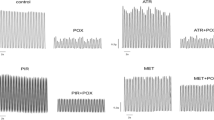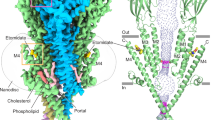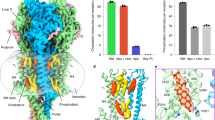Abstract
SUCCINYLCHOLINE is the most commonly used neuromuscular blocking drug for relaxing skeletal muscles during surgery or electroconvulsive therapy. Its main advantages are rapid onset and brief duration of action. It has, however, serious defects in that it often causes marked postoperative pain in skeletal muscles because its depolarizing action causes an asynchronous contraction in muscle bundles before paralysis occurs; there is no convenient remedy for controlling the prolonged apnoea which occurs in individuals deficient in serum pseudocholinesterase. Competitive neuromuscular blocking drugs such as (+)-tubocurarine or pancuronium do not cause muscle pain but are rather long-acting. Further disadvantages are that pancuronium has a slow onset of action and (+)-tubocurarine releases histamine and partially blocks autonomic ganglia at paralysing doses. There is therefore still a need for a short-acting, competitive neuromuscular blocking agent with a rapid onset of action and which does not affect the cardiovascular system at therapeutic doses. Some of the azobis-arylimidazo-[1,2-a]-pyridinium derivatives described here appear to have these properties. Most of the compounds were made by Glover1 and his colleagues at Tees-side Polytechnic; some were made in the research laboratories of Allen and Hanburys Ltd. The compounds were prepared as dibromides or dichlorides. The reference drugs used were (+)-tubocurarine dichloride, succinylcholine dichloride, gallamine triethiodide and pancuronium dibromide. Here doses refer to the parent base.
This is a preview of subscription content, access via your institution
Access options
Subscribe to this journal
Receive 51 print issues and online access
$199.00 per year
only $3.90 per issue
Buy this article
- Purchase on Springer Link
- Instant access to full article PDF
Prices may be subject to local taxes which are calculated during checkout
Similar content being viewed by others
References
Glover, E. E., and Yorke, M., J. Chem. Soc. (C), 3281 (1971).
Collier, H. O. J., Hall, R. A., and Fieller, E. C., Analyst, 74, 592 (1949).
Van der Veen, F., Communication to Federation Meeting of Dutch Medical Biological Societies (Rotterdam, April 22–24, 1971).
Hespe, W., and Wieriks, J., Biochem. Pharmacol., 20, 1213 (1971).
Cohen, E. N., Winslow Brewer, H., and Smith, D., Anaesthesiology, 28, 309 (1967).
Author information
Authors and Affiliations
Rights and permissions
About this article
Cite this article
BOLGER, L., BRITTAIN, R., JACK, D. et al. Short-lasting, Competitive Neuromuscular Blocking Activity in a Series of Azobis-Arylimidazo-[1,2-a]-Pyridinium Dihalides. Nature 238, 354–355 (1972). https://doi.org/10.1038/238354a0
Received:
Revised:
Issue Date:
DOI: https://doi.org/10.1038/238354a0
This article is cited by
-
Analytical model of some pharmacokinetic and pharmacodynamic properties of fazadinium in man
European Journal of Clinical Pharmacology (1983)
-
The effect of ketamine upon depolarizing and non-depolarizing neuromuscular blockade in rabbit
Naunyn-Schmiedeberg's Archives of Pharmacology (1974)
Comments
By submitting a comment you agree to abide by our Terms and Community Guidelines. If you find something abusive or that does not comply with our terms or guidelines please flag it as inappropriate.



